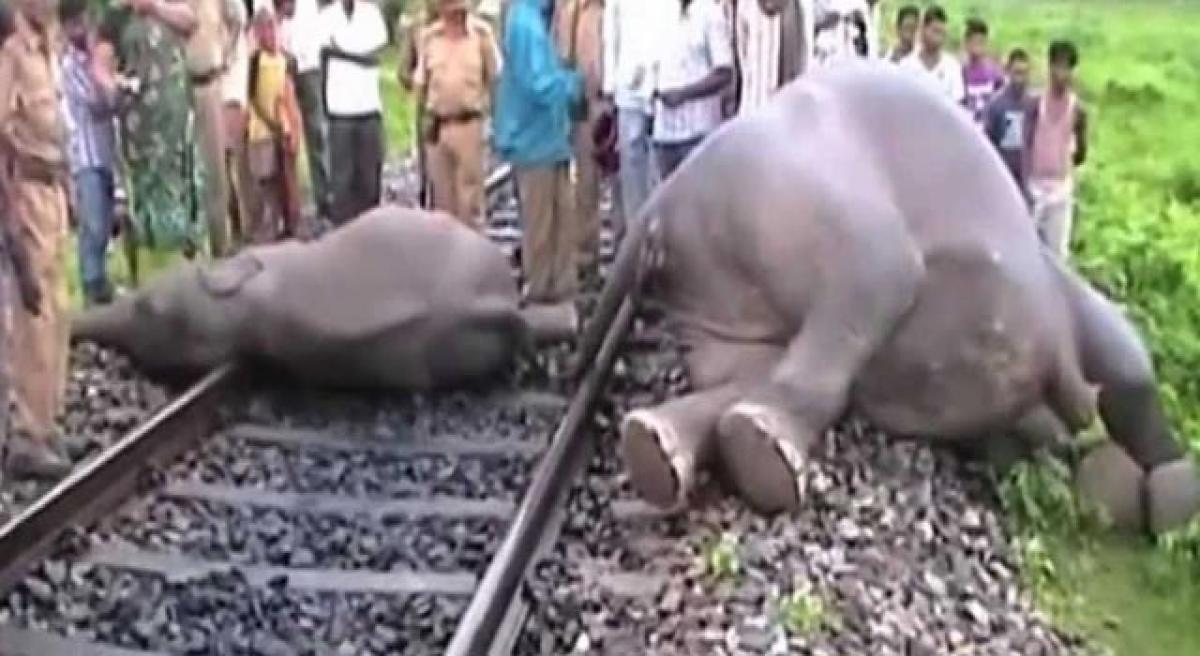Live
- District Collector Encourages Students to Utilize Government Facilities for a Better Future
- Per capita availability of fruits, vegetables increases in India
- FII buying reaches Rs 22,765 crore in Dec as economic growth stays resilient
- National Energy Conservation Day 2024: Date, Importance, and Easy Ways to Save Energy
- Gastronomic trouble: After 'disappearing' samosas Himachal CM in row over red jungle fowl
- Meaningful dialogue a priceless jewel of democracy: Jagdeep Dhankhar
- CM Revanth Reddy Advocates for Gurukuls as Talent Development Centers
- Zepto’s expenses surge over 71 pc in FY24, losses at Rs 1,248 crore
- Tim Southee matches Chris Gayle's six-hitting record in his farewell Test
- AP Mnister Ponguru Narayana Inspects Highway Connectivity Roads to Amaravati
Just In

Jharkhand has seen the deaths of a staggering 156 elephants -- or nearly a fifth of its pachyderm population -- since it was carved out of Bihar in November 2000, prompting the state to set up a Wildlife Crime Control Cell to draw up short- and long-term measures to prevent further deaths and resolve growing animal-human conflicts.
Wildlife crime control cell to be set up
Ranchi : Jharkhand has seen the deaths of a staggering 156 elephants or nearly a fifth of its pachyderm population -- since it was carved out of Bihar in November 2000, prompting the state to set up a Wildlife Crime Control Cell to draw up short- and long-term measures to prevent further deaths and resolve growing animal-human conflicts.
"We are planning to set up a Wildlife Crime Control Cell for which a budgetary provision of Rs 3 crore has been made for 2016-17. We will identify areas where incidents have taken place and we will take preventive measures wherever possible," Sukhdeo Singh, Principal Secretary, Forest and Environment Department, said.
Elephants have been losing their lives at the rate of almost 10 a year in the state for a variety of reasons from electrocution to being run over by trains, and poaching to consuming poisonous substances. In the most recent incident, late last month, two elephants, including a calf, died after being hit by a speeding train near Gautam Dhara railway station some 30 km from the State capital.
While poaching of these big animals for their ivory tusks that command huge prices at home and abroad is among the reasons why these "gentle giants" lose their lives, it is not the biggest cause for the deaths that dubious honour goes to electrocution. As many as 32 of the 156 elephants that died were found to have been electrocuted and 22 were killed in train accidents.
Poaching, poisoning and age are among the other big causes for the deaths. The maximum number of deaths in Jharkhand was reported in 2008-09, when 22 elephants were killed. The year 2003-04 saw 18 elephants dying for various reasons, while 15 lost their lives in 2007-08. Despite these deaths, the state has actually seen a rise in the number of these animals. As compared to 2007 when there were 624 elephants, the number increased to 688 in 2012, the last time a count was taken.
"The elephant population has increased. There are herds of elephants that keep roaming from one area to another," Rajiv Bakshi, Divisional Forest Officer (DFO) of Ranchi said. Bakshi is also in touch with railway authorities to avoid incidents of running over by trains in future. The Centre had started Project Elephant in 1992 to prevent animal-human conflict, but the initiative has so far failed to yield positive results. But now the state is evolving both long- and short-term plans under the project, said Bakshi.
"Under the short-term plans, people in the rural areas are made aware and apprised about the movement of elephants and measures to tackle them if they enter the villages. On the other hand, under the long-term plans, solar lights are being erected in villages and villagers are given solar torches," Bakshi added. The main reason for human conflict with elephants is that they do not stick to one place and keep moving in search of food and water.
Though they move along fixed corridors, each passing year sees these corridors being encroached upon by humans and land being used for cultivation. This creates scarcity of food for the animals and they are drawn to the villages and end up destroying crops and houses sometimes even killing people. At many places railway lines have come up in the elephant corridors.
Forest officials are hoping that with these new short- and long-term plans being executed, the deaths of many elephants will be avoided in future. The officials are now gearing up for the once-in-five-years elephant census that will begin across the nation from this month. The new figures would help decide the welfare projects and other measures needed to be adopted for protecting these animals.
By Nityanand Shukla

© 2024 Hyderabad Media House Limited/The Hans India. All rights reserved. Powered by hocalwire.com







